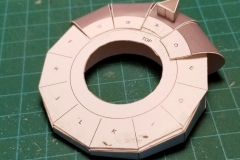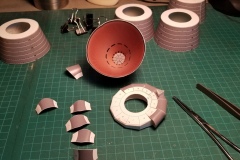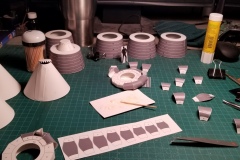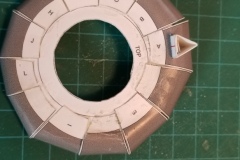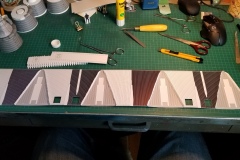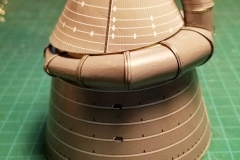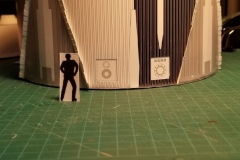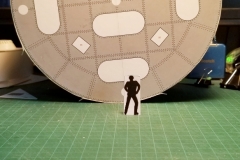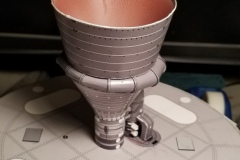Saturn V: Engines Part 1
Finally started my Saturn V in earnest this past weekend and even after three days, it’s only this far. It’s going to take a while to finish this baby, but the growth, after the engines, should be relatively visible.
I’m using a little guy that I created, that is the same scale as the rocket for a size comparison. He’ll be in a few of the shots and although I mention him in these photos, I’ll stop saying it. It’s a little redundant.
The engines themselves are fascinating, in real life. I recall reading in a science paper a few months back, that when NASA decided they wanted to get back into large rockets — dubbed their SLS, or Space Launch System.
Basically, they’ve broken their programs into two parts… the launch part, or the SLS, and the container part, currently called the MPCV or Multi Purpose Crew Vehicle. The first MPCV off the line is the Orion, so the mission to get back into space is dubbed the Orion, similar to the Apollo missions.
However, the Orion can also be used to take equipment and supplies to the ISS.
But, first, back to the SLS. The engines that powered the Apollo missions on the Saturn V’s were called F-1. In the final rendition of this engine, the F-1 used a liquid hydrogen system called J-2 which made the Saturn C-5 configuration optimal.
Okay, but why mention this. Because when they went looking for engine designs for the SLS system, they needed an engine design that could equal or surpass the Saturn V F-1’s. However, incredulously, no blueprints, nor anyone that worked on the project had any information.
So what did they do? Well, remember when the Apollo program was cancelled and they chopped ’em up and put them on display? Yep. You guessed it. The found one in a display and tried to reverse engineer it. You can read some of the story here as NASA SLS
One of the most interesting things they discovered is that there were more than 200 welds on the engines… a skill that no longer exists and they weren’t sure if a robot could duplicate the precision that a person would have done.
Here are the photos of the engines and the thrust section of the first stage of the booster so far.




